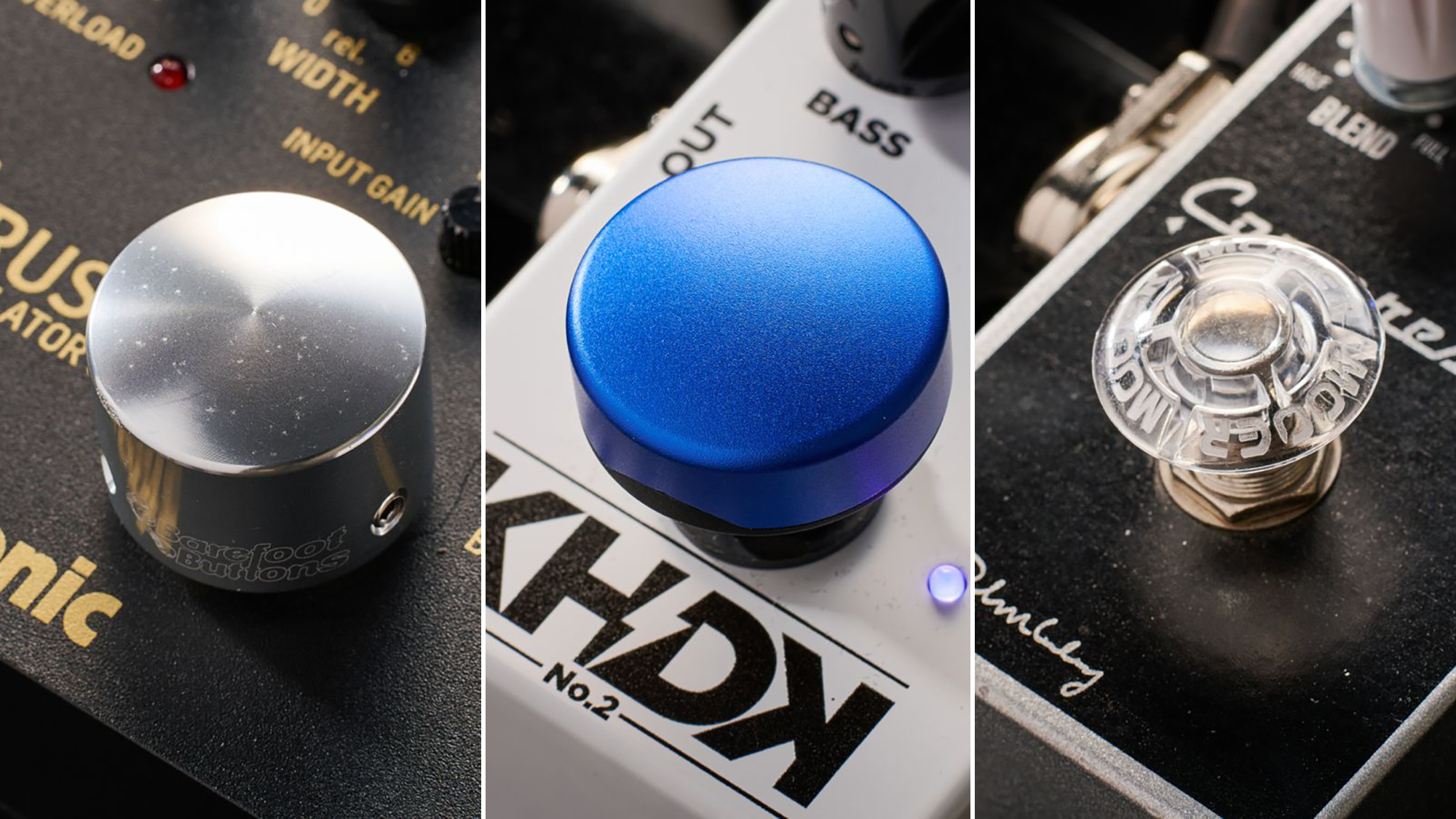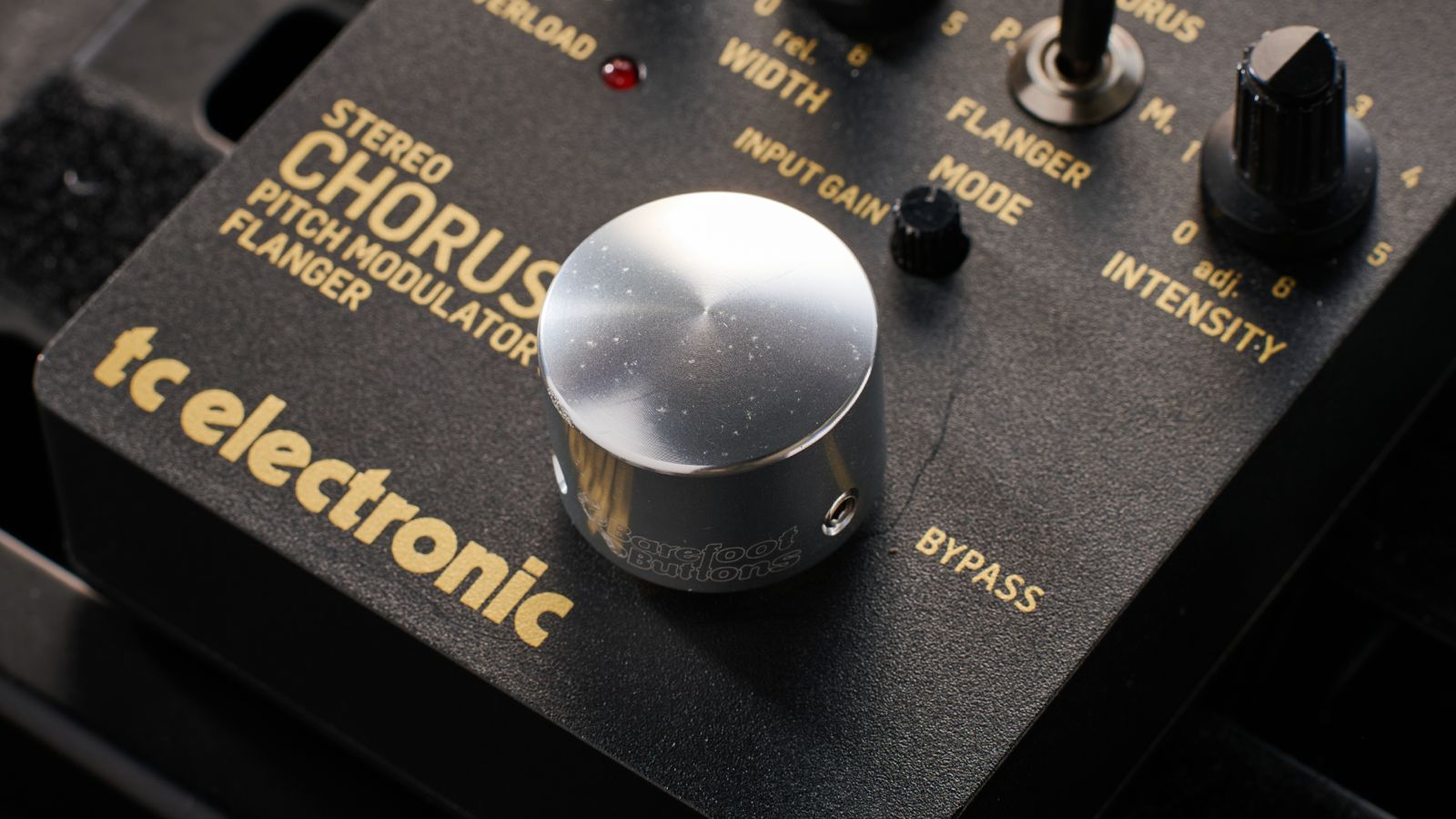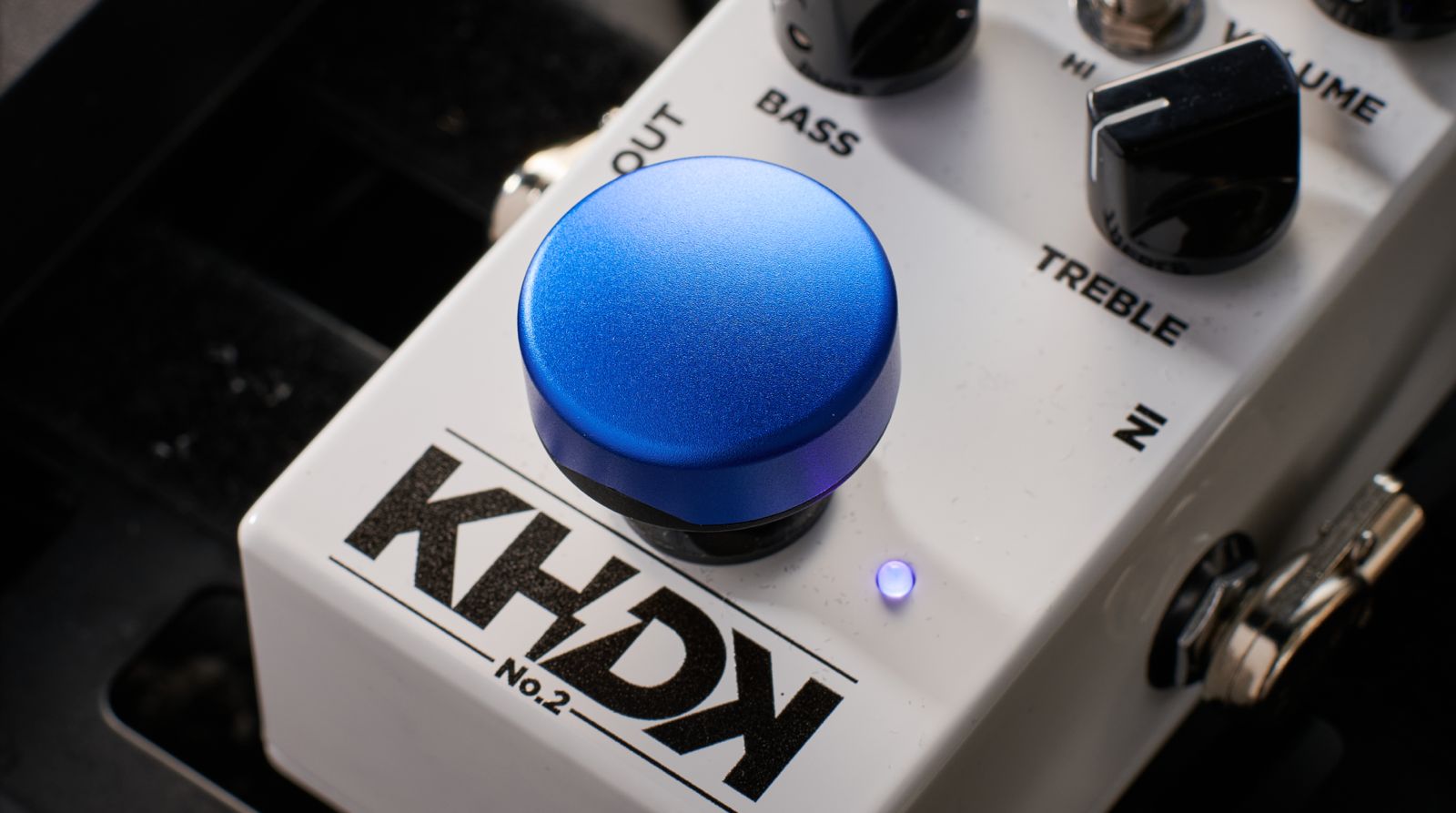“It’s about confidence. It makes it quicker to find the effect, you make changes faster and you focus more on your playing”: Guitar pedal footswitch toppers explained – and why they could be your pedalboard’s new best friend
We dive into the pedal topper trend and what’s behind it, highlighting the key types you need to look out for

There was a time when guitar pedal footswitches were simply chrome shiny things you stomped on with a big ol’ boot. But scroll through pedal posts on Instagram or Reddit, and you’ll be bombarded with a rainbow of toppers covering these simple switches. What gives?
You have witnessed the rise of footswitch toppers, also known as pedal toppers, footswitch caps, pedal button toppers or footswitch covers.
These colorful accessories have become de rigeur for modern-day pedalboards – but they’re much more than an aesthetic trend.
Footswitch toppers have soared in popularity thanks to their ability to allow guitarists to more easily distinguish pedals and access difficult-to-reach stompboxes.
Now there are a plethora of options available to guitarists, from budget Amazon plastic offerings to premium aluminum products.
But first, I’ll explain why these dinky devices could be your pedalboard’s new best friend…
Why would I want a footswitch topper?
Access your top tier of pedals
You can trust Guitar World
As someone who has been constantly tinkering with his pedalboards for two decades, I’ve found footswitch toppers the easiest way to access pedals on the upper tier of my pedalboard – and I’m not alone.
“There are a lot of clearance issues that arise with pedalboards that contain multiple pedals as well as multiple tiers of pedals,” says Brett Richards, founder of Barefoot Buttons, who were first to bring the concept to market in 2015.
“It can be difficult to trigger a switch when there might be another row of pedals right in front of the switch being activated. Toppers allow you to have a bigger switching surface along with added height to the switches that may need it.”
Make footswitches easier to hit
Being able to physically hit footswitches in the heat of the moment has become more of a challenge as the pedal industry has exploded.
Pedals are increasingly varied in their size and shape, not to mention crammed together closer than ever before. And when you need to hit the right footswitch at the right time in the middle of a performance, that extra surface area can make all the difference.
“Footswitch toppers increase the contact area, giving users greater confidence,” says Mooer’s Senior Product Manager, Leo Wong. “We’ve even developed glow-in-the-dark versions to accommodate dimly lit stage environments.
“These features significantly reduce the stress of live performances, allowing musicians to focus on their playing rather than worrying about hitting the wrong switch in the next section.”
Wong points towards multi-switch combinations on modern multi-effects floorboards and amp modelers as another situation where that increased surface area can help to hit the right footswitches – something I’ve certainly found with my own top-row HX Stomp XL, which has been fully kitted out with footswitch toppers since it was Velcro’d to my ’board.

Make it easier to identify pedals
When you look down at your pedalboard to switch up your sound and you’re faced with a sea of identical chrome footswitches, it can delay your decision-making, especially on poorly lit stages.
That’s where toppers come in: I can categorize certain effects by colors, or even flag up the footswitches I don’t want to hit – ideal for those always-on overdrives.
For me, again, it’s about confidence: if it makes it quicker to find the effect I’m looking for, I make changes faster and focus more on my playing.
As Richards puts it, “They offer a quick and easy visual differentiation between switches. In general, toppers make it a lot easier to navigate your pedalboard.”
Play barefoot
Going sans footwear was easy when all the world was Boss pedals. But the rise of 3DPT (aka true bypass) footswitches has made hitting pedals with no shoes a painful experience.
Not so with footswitch toppers – and as the name suggests, Barefoot Buttons were way ahead of the curve.
“I would play barefoot on stage and always had problems triggering the small switches associated with most effects pedals,” Richards says of the company’s origins.
“Around 2008 or so, I machined some early versions of the buttons. One of my bandmates at the time, Mike Love, was gigging around the country. He would come back home and tell me that people everywhere were asking him about the buttons on his board and where they could buy them.”

They’re fun
Let’s be honest: the world could use a little more color.
And as pedal artwork has gotten more and more extravagant, and guitarists are sharing more and more pics of their pedalboards on Instagram, footswitch toppers help your ’board stand out.
We’re all shallow when it comes to guitar finishes. It was only inevitable that pedalboards would be next…
What types of footswitch topper are available?
There are two main types of footswitch topper on the market. One is the screw-on design pioneered by Barefoot Buttons, which can be adjusted to different sized switches.
The other is the ‘candy’ plastic toppers launched by Mooer in 2016, which fit most common footswitch sizes.
Naturally, Amazon is awash with all manner of cheaper alternatives, but they’re derived from these original designs.
Set screw footswitch toppers
As the name suggests, these accessories use a small hex screw, tightened with an Allen key, to attach to the pedal’s footswitch.
The advantage of this design is you can adjust the fit of the button to your footswitch – which is crucial given the increasing variation of footswitch designs and sizes.
Barefoot Buttons now makes a variety of formats to fit 3PDT footswitches (your regular true bypass design), as well as the increasingly common SPST tap switches found on tap tempo devices. There are also options for larger 3PDT and multi-FX switches, as well as mini versions that don’t block halo LEDs from view.
Brands including Sonicake and RockBoard make variations on Barefoot’s format, while Valeton even offers designs with emojis on them.
The snag with these options is that the craftsmanship does cost more, with single Barefoot toppers starting at $8.95, but you can be sure they will fit whatever footswitch you throw at them. Barefoot offer a compatibility guide for this very purpose.

Plastic ‘candy’ footswitch toppers
Cheap and cheerful, these multicolored footswitch toppers are among the most ubiquitous on modern pedalboards, and were first introduced by Mooer in 2016.
Clocking the rising footswitch topper trend, the firm sought to create their own version, which took a different approach to the set screw design.
“We adopted a plastic molding approach, effectively reducing costs while making assembly and disassembly effortless,” says Leo Wong.
Multipacks are cheap and plentiful, with huge quantities of the toppers available for under $10.
The downside is that these options are only available in one size, so they won’t fit more uncommon switches unless specifically stated.
Toppers for ‘halo’ footswitches
Many modern multi-FX pedals, including the Line 6 Helix and Fractal FM3, are equipped with footswitches that feature ‘halo’ LED indicators around the switch itself.
Unfortunately, if you fit a footswitch topper to one of these, you’ll liable to block the LED, which will only make your onstage job more difficult.
Thankfully, there are alternatives. Mooer’s transparent Shroom toppers allow LEDs to shine through with no obstruction.
Sonicake also offers its own version, while Hotone’s Karat is shaped like a diamond. Barefoot Buttons’ mini designs also allow lights to shine through.
Other designs
D’Addario’s XPND topper offers a hybrid of some of the most common topper types, with a flip-top design that clips onto the footswitch.
It’s tightened by flipping the top down, negating the need for tools while channeling some of the flexibility of the typical set-screw design. Although, like many plastic offerings, it won’t fit all footswitches.
Footswitch toppers are part of the landscape of the modern pedalboard, and we can expect more designs to crop up in the coming years.
Whatever’s next, it’s bound to make your ’board more practical – and more colorful, too...
All the latest guitar news, interviews, lessons, reviews, deals and more, direct to your inbox!

Mike is Editor-in-Chief of GuitarWorld.com, in addition to being an offset fiend and recovering pedal addict. He has a master's degree in journalism from Cardiff University, and over a decade's experience writing and editing for guitar publications including MusicRadar, Total Guitar and Guitarist, as well as 20 years of recording and live experience in original and function bands. During his career, he has interviewed the likes of John Frusciante, Chris Cornell, Tom Morello, Matt Bellamy, Kirk Hammett, Jerry Cantrell, Joe Satriani, Tom DeLonge, Ed O'Brien, Polyphia, Tosin Abasi, Yvette Young and many more. In his free time, you'll find him making progressive instrumental rock under the nom de plume Maebe.
